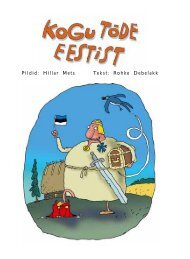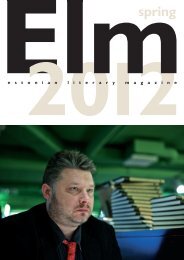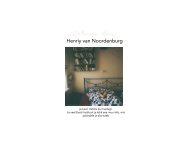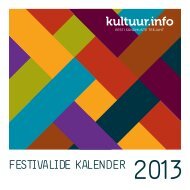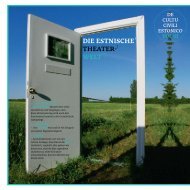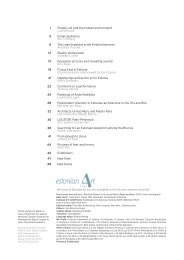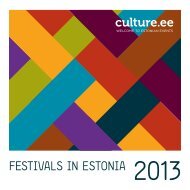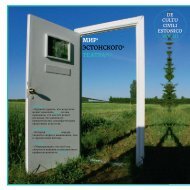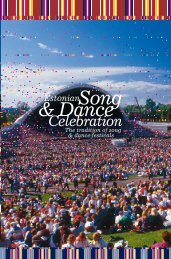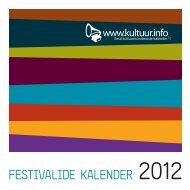FACTS ABOUT ESTONIA
FACTS ABOUT ESTONIA
FACTS ABOUT ESTONIA
Create successful ePaper yourself
Turn your PDF publications into a flip-book with our unique Google optimized e-Paper software.
3VISUAL<strong>ESTONIA</strong>The changing silhouette of the capital,Tallinn, with its bustling harbour in theforeground symbolises the importancemarine trade has had for the Estonianeconomy through the ages.Throughout history the Estonians have called themselves maarahvas (lit. ‘people ofthe land’). The reason for this can be discerned in the landscape of Estonia – scatteredfarmsteads in a mosaic of fields, meadows and woodland. The taciturn nature of Estonianshas probably much to do with this reclusive way of life.Most Estonians have strong emotionalattachment to certain images, whichremind them of home, family values,the Estonian character and other suchqualities. This perception of belongingcan be evoked by the sea, the forest,a well-kept farm or simply one’s ownhome with its apple orchard, an oldtree in the front garden, a stone fenceand the surrounding rural landscape.The latter could be the fertile fields ofcentral Estonia or the meagre juniperfilledgrazing lands on the westernislands – both conjure romantic andsentimental reactions in Estonians.Other shared symbols include theTallinn skyline viewed from the seaand the facade of the classicist mainbuilding of the University of Tartu.At more than two hundred years old,the main building of the University ofTartu has witnessed the activities ofthe Baltic German Estophiles, and theemergence in the early 19th century ofthe first indigenous Estonians to seek ahigher education.



